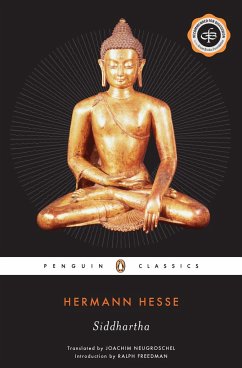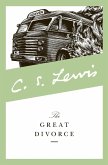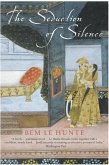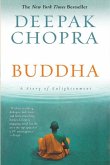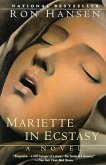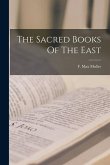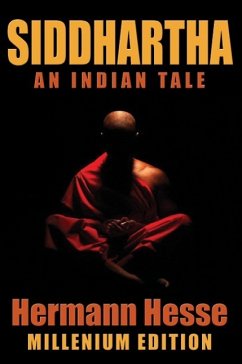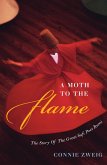12,99 €
inkl. MwSt.
Versandfertig in über 4 Wochen

6 °P sammeln
- Broschiertes Buch
- Merkliste
- Auf die Merkliste
- Bewerten Bewerten
- Teilen
- Produkt teilen
- Produkterinnerung
- Produkterinnerung
A bold new translation of Hesse's most beloved work by an award-winning translator.
Andere Kunden interessierten sich auch für
![The Great Divorce The Great Divorce]() C S LewisThe Great Divorce17,99 €
C S LewisThe Great Divorce17,99 €![The Seduction of Silence The Seduction of Silence]() Bem Le HunteThe Seduction of Silence15,99 €
Bem Le HunteThe Seduction of Silence15,99 €![Buddha Buddha]() Deepak ChopraBuddha22,99 €
Deepak ChopraBuddha22,99 €![Mariette in Ecstasy Mariette in Ecstasy]() Ron HansenMariette in Ecstasy16,99 €
Ron HansenMariette in Ecstasy16,99 €![The Sacred Books Of The East The Sacred Books Of The East]() F Max MullerThe Sacred Books Of The East24,99 €
F Max MullerThe Sacred Books Of The East24,99 €![Siddhartha Siddhartha]() Hermann HesseSiddhartha23,99 €
Hermann HesseSiddhartha23,99 €![A Moth to the Flame A Moth to the Flame]() Connie ZweigA Moth to the Flame17,99 €
Connie ZweigA Moth to the Flame17,99 €-
-
-
A bold new translation of Hesse's most beloved work by an award-winning translator.
Hinweis: Dieser Artikel kann nur an eine deutsche Lieferadresse ausgeliefert werden.
Hinweis: Dieser Artikel kann nur an eine deutsche Lieferadresse ausgeliefert werden.
Produktdetails
- Produktdetails
- Verlag: Penguin Publishing Group
- Seitenzahl: 176
- Erscheinungstermin: 1. Januar 1999
- Englisch
- Abmessung: 200mm x 130mm x 12mm
- Gewicht: 145g
- ISBN-13: 9780141181233
- ISBN-10: 0141181230
- Artikelnr.: 21398614
- Herstellerkennzeichnung
- Libri GmbH
- Europaallee 1
- 36244 Bad Hersfeld
- 06621 890
- Verlag: Penguin Publishing Group
- Seitenzahl: 176
- Erscheinungstermin: 1. Januar 1999
- Englisch
- Abmessung: 200mm x 130mm x 12mm
- Gewicht: 145g
- ISBN-13: 9780141181233
- ISBN-10: 0141181230
- Artikelnr.: 21398614
- Herstellerkennzeichnung
- Libri GmbH
- Europaallee 1
- 36244 Bad Hersfeld
- 06621 890
In the 1960s, especially in the United States, the novels of Hermann Hesse were widely embraced by young readers who found in his protagonists a reflection of their own search for meaning in a troubled world. Hesse's rich allusions to world mythologies, especially those of Asia, and his persistent theme of the individual striving for integrity in opposition to received opinions and mass culture appealed to a generation in upheaval and in search of renewed values. Born in southern Germany in 1877, Hesse came from a family of missionaries, scholars, and writers with strong ties to India. This early exposure to the philosophies and religions of Asia--filtered and interpreted by thinkers thoroughly steeped in the intellectual traditions and currents of modern Europe--provided Hesse with some of the most pervasive elements in his short stories and novels, especially Siddhartha (1922) and Journey to the East (1932). Hesse concentrated on writing poetry as a young man, but his first successful book was a novel, Peter Camenzind (1904). The income it brought permitted him to settle with his wife in rural Switzerland and write full-time. By the start of World War I in 1914, Hesse had produced several more novels and had begun to write the considerable number of book reviews and articles that made him a strong influence on the literary culture of his time. During the war, Hesse was actively involved in relief efforts. Depression, criticism for his pacifist views, and a series of personal crises--combined with what he referred to as the "war psychosis" of his times--led Hesse to undergo psychoanalysis with J. B. Lang, a student of Carl Jung. Out of these years came Demian (1919), a novel whose main character is torn between the orderliness of bourgeois existence and the turbulent and enticing world of sensual experience. This dichotomy is prominent in Hesse's subsequent novels, including Siddhartha (1922), Steppenwolf (1927), and Narcissus and Goldmund (1930). Hesse worked on his magnum opus, The Glass Bead Game (1943), for twelve years. This novel was specifically cited when he was awarded the Nobel Prize for Literature in 1946. Hesse died at his home in Switzerland in 1962. Calling his life a series of "crises and new beginnings," Hesse clearly saw his writing as a direct reflection of his personal development and his protagonists as representing stages in his own evolution. In the 1950s, Hesse described the dominant theme of his work: "From Camenzind to Steppenwolf and Josef Knecht [protagonist of The Glass Bead Game], they can all be interpreted as a defense (sometimes also as an SOS) of the personality, of the individual self." Joachim Neugroschel (translator) has won three PEN translation awards and the French-American translation prize. He has also translated Thomas Mann's Death in Venice and Sacher-Masoch's Venus in Furs, both for Penguin Classics. He lives in Brooklyn, New York. Ralph Freedman (introducer), Professor Emeritus of Comparative Literature at Princeton University, is acclaimed for his biographies Hermann Hesse: Pilgrim of Crisis, and Life of a Poet: Rainer Maria Rilke.
gretwidm.jpg)
© Gret Widmann / Suhrkamp Verlag
